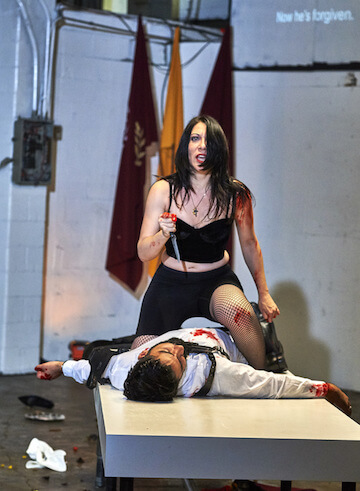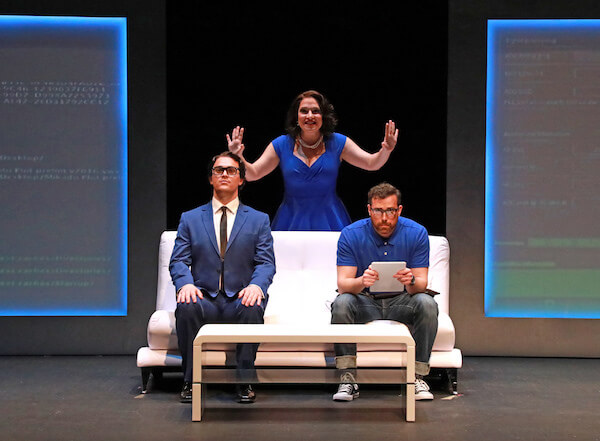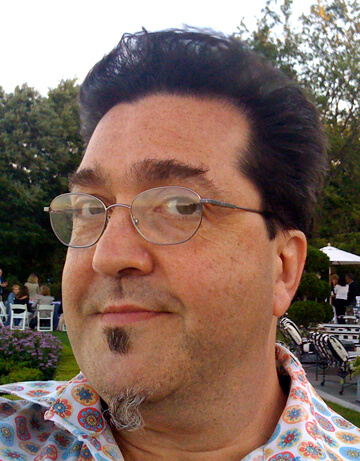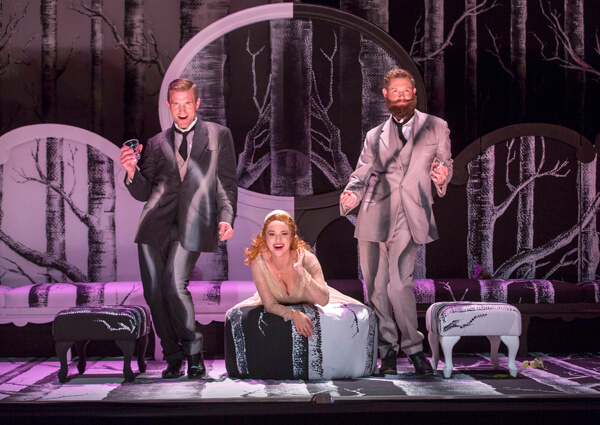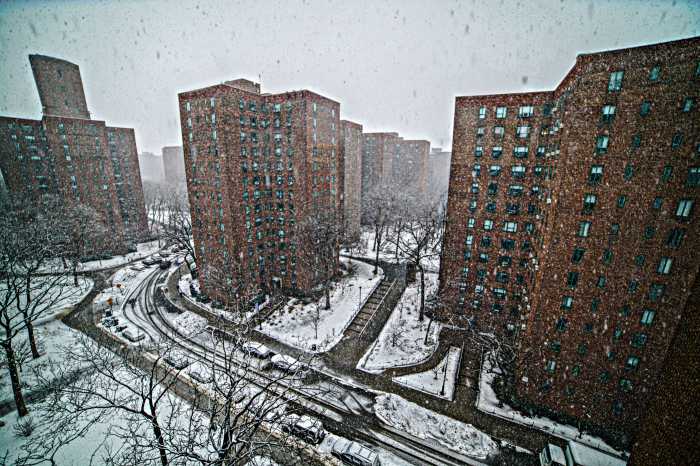Leonarda Priore and Megan Nielson in the Chelsea Opera production of Puccini’s “Suor Angelica.” | JANETTE PELLEGRINO
The New York Opera Fest (nyoperafest.com) has been sponsoring opera presentations all over the city in May and June made possible, in part, by public funds from the city Department of Cultural Affairs, the City Council, and state Council on the Arts.
Chelsea Opera is one of the members of the New York Opera Alliance that were invited to present special performances. The company’s double bill of “Suor Angelica” and “Puccini — the Man and his Music” (a concert of his chamber works) was presented at Christ & St. Stephen’s Church, a few blocks north of the Metropolitan Opera, on June 16 and 17.
Critics who favor the intellect over raw emotion have been hating on Puccini for more than 100 years now. In particular, “Suor Angelica” has been accused of melodramatic bathos, manipulative sentimentality, and phony religiosity. At the 1918 world premiere at the Metropolitan Opera, “Angelica” was considered the least successful section of Puccini’s “Trittico” (“Triptych”) and was quickly dropped from the repertoire.
Freed from the opera house, Italian composer is all over the city
The strength of Chelsea Opera’s “Suor Angelica” is its intimacy — this is at heart a small personal story and the crucial scenes involve either Sister Angelica alone or in confrontation with her unforgiving aunt, La Zia Principessa. The production was presented tastefully and simply in the altar and nave of the small church with almost no set except for a few trellises and flowers to suggest the garden of the convent.
Megan Nielson’s Suor Angelica was an emotionally reserved and dignified young nun, not a hysterical verismo drama queen. This self-possession undercut the suppressed anxiety and desperation the character feels when told she has a visitor after seven years of being deprived of any news of her family and illegitimate child. But the desolation Angelica experiences when told the child had died years before of a fever played as quiet truth rather than melodrama projected to the back row of a huge auditorium. Nielson’s rangy soprano handled the high and low passages with authority, and when she had to let her voice out the tonal quality improved without a trace of harshness. Softer dynamics showed less finely tuned control.
Leonarda Priore as La Zia Principessa was terrifying in her cold anger, abetted by a dark mezzo exuding innate authority. Little dramatic touches like casually removing her gloves while delivering the news that Angelica’s son had died created a chilling portrait despite a lack of old age makeup; some gray hair and a hat or veil would have completed Priore’s look.
The supporting ensemble nuns had mostly attractive voices (though dicey Italian diction afflicted the younger ones). Standouts included Juli Borst as the Mistress of Novices and Joanie Brittingham as a bright-voiced, unaffected Suor Genovieffa.
Carol Wilson’s production made good use of the space and showed intelligence when it kept things simple. In the final death scene, Wilson had all the nuns onstage veiled as fantasy witnesses to Angelica’s suicide rather than singing offstage. Sister Genovieffa enacted the vision of the Virgin Mary cradling the dying Angelica. A young boy entered down the front aisle when Angelica, in her final throes, is reunited with her son’s spirit. Most current productions have Angelica mime these visions with a change of lighting (Renata Scotto performed this business superbly). Less would have been more and it didn’t fit in with the spare simplicity of the earlier scenes.
Benjamin Grow led a well-integrated ensemble of about 15 players in a chamber reduction that improved clarity with no loss of harmonic detail. A quartet of these musicians was expressive in two Puccini chamber works — the first movement of the “String Quartet in D Major” and “Cristantemi” (which was later recycled in Act III of “Manon Lescaut”). The “Salve Regina” for soprano (a cool voiced Samantha Kantak) and organ (played by the skilled Daniel Ficarri) evoked the “Intermezzo” and “Easter Hymn” in Mascagni’s “Cavalleria Rusticana.”
LoftOpera is the trendiest thing to hit the New York opera scene in decades. The company performs in event spaces ranging from glass factories to circus aerialist schools in the East Williamsburg/ Bushwick areas of Brooklyn. The singers are young, the audience is young, the tickets are cheap, and you can buy handcrafted local beer and wine on the premises. It is a like a hip loft party with an opera as the center stage musical entertainment. Earlier this spring, LoftOpera presented Puccini’s “Tosca” in what was formerly Li’s Bus Repair Corp. on Randolph Street.
Eleni Calenos in Loft Opera's production of Puccini's “Tosca.” | ROBERT ALTMAN
Staged in a walled-in area of the cavernous industrial space, Raymond Zilberberg’s updated production was modern, spare, and edgy, making a virtue of necessity. The modern hip clothing by Sean Kelly, the graphic violence, and the off-kilter feeling of menace suggested the influence of Quentin Tarantino.
Puccini’s librettists Giacosa and Illica improved on the source play by Sardou, a grandiose historical melodrama, by focusing the action on the three protagonists. The drama becomes an agon between the forces of good and evil in a series of one-on-one encounters. Sartre’s “No Exit” also comes to mind as the three leads engage in existential combat — hell really is other people in “Tosca.” Puccini’s music heightens these characters, turning melodrama into Romantic tragedy.
At LoftOpera, you are on the same level as the singers and share the same space — being only eight or 10 feet away from the singers made the audience feel complicit in the drama. Contrast this with the productions presented at the Met where the singers are miles away in a cavernous historical set. In Act II at LoftOpera, when Cavaradossi is dragged off and Tosca and Scarpia are left alone to decide his fate, there was a pause and their eyes locked for several seconds. In that moment the audience knew “it’s on” — a confrontation was going to occur that was either sexual or violent (or in this case both). Whatever happened we couldn’t watch it from a detached spectator position.
The singers were not the most polished vocalists but were a committed bunch, and you took their flaws along with their undeniable strengths. Eleni Calenos, a scrappily determined rather than glamorous Tosca, has a dark lyric soprano with a deep viola timbre in the middle register. The top under pressure can harden. She was musical and quite direct in both acting and phrasing. Calenos stripped down to a small black slip in Act II in preparation for Scarpia’s seduction/ murder.
Scarpia, played as a banana republic military chief cum drug kingpin by firm voiced baritone Kevin Wetzel, was a youthful and definitely sexual antagonist. Most promising was tenor James Chamberlain as Mario Cavaradossi, the object of their conflict. Chamberlain has a huge, ripe spinto tenor with a ringing top and dark-toned middle register that filled the space. A former baritone, Chamberlain has voice everywhere but the transitions from middle to high or loud to soft are less than smooth. This is a major voice in need of major polishing, and the burly bearded tenor is a slightly clumsy actor.
All the supporting singers sported fine voices — Joseph Beutel as a mellifluous Angelotti and Stefanos Koroneos, who played the Sacristan as a fussy, uptight functionary, not the usual clichéd buffo clown.
Dean Buck led a large ensemble of nearly 40 musicians situated behind the audience to the right. His broad reading of the score revealed admirable control despite some ensemble problems due to the odd acoustics and configuration of the space.

